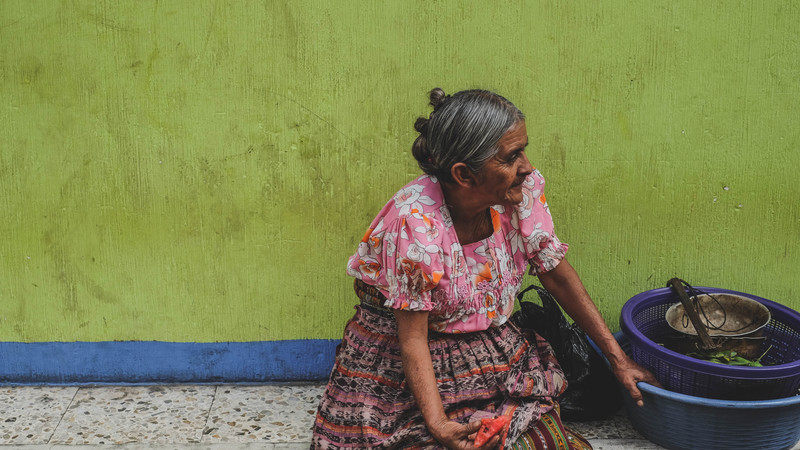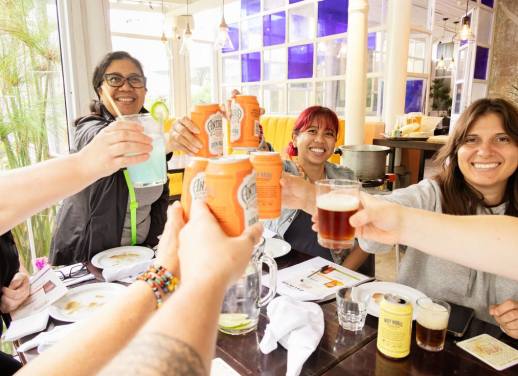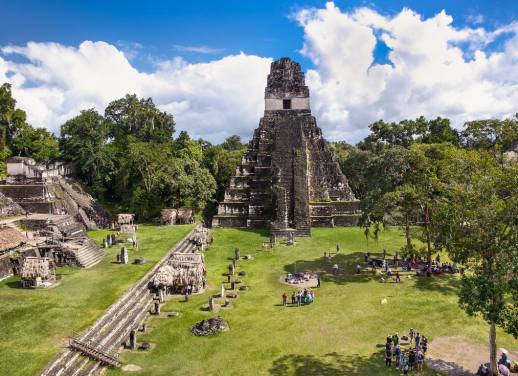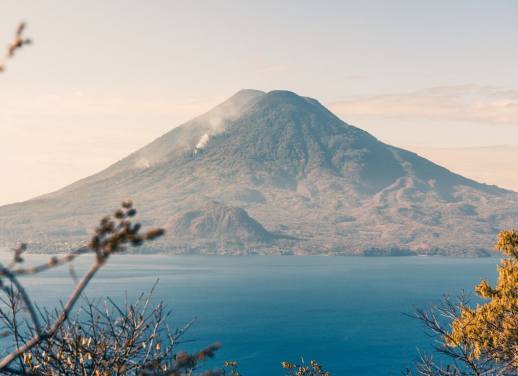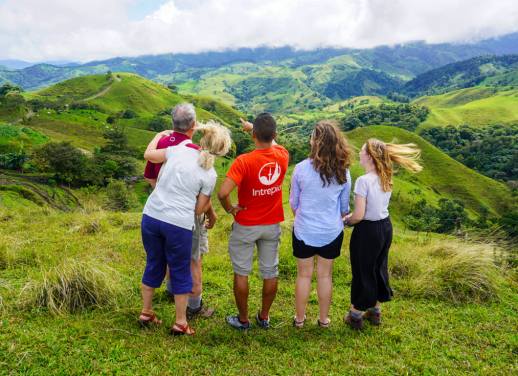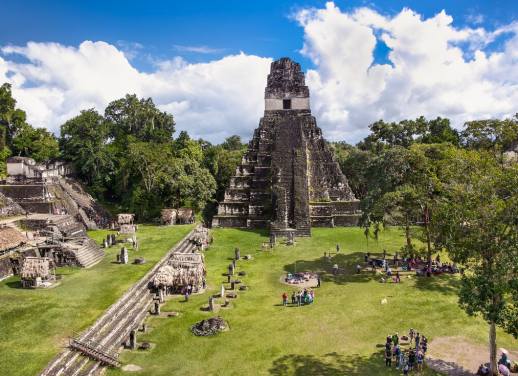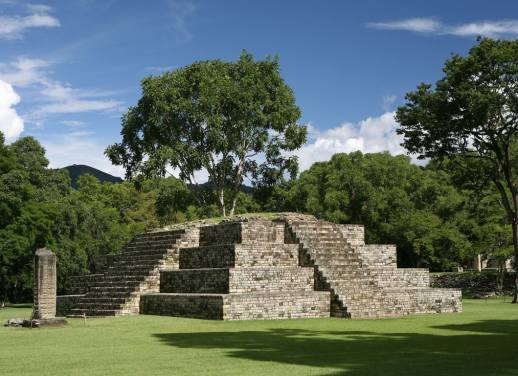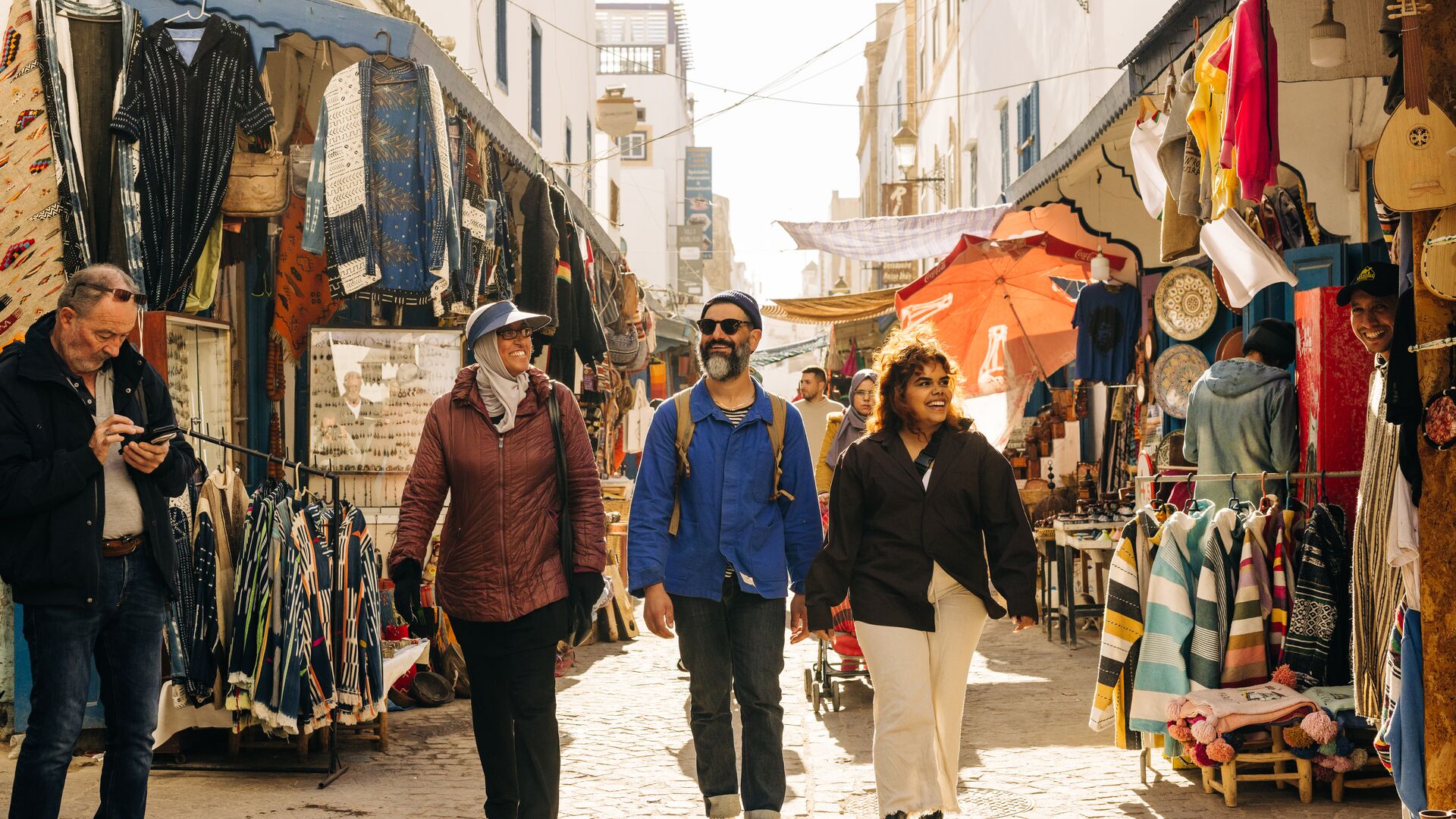Ancient Maya ruins nestled in the jungle, the colorful town of Antigua and magnificent volcanoes all throughout the country… Guatemala has plenty of noteworthy sites to explore.
But, compared to its neighbors in Central America (we’re looking at you, Costa Rica), this beautiful country remains pretty under the radar.
So, to give you some insider tips, we’ve curated a bunch of surprising and curiosity-inducing Guatemala facts. They prove that Guatemala is worthy of the spotlight, and maybe, just maybe, they’ll entice you to visit for yourself.
1. There are 21 dialects spoken in Guatemala
Spanish is the official language and is spoken by 90% of the population. However, there are long-standing Mayan, Xinca and Garífuna roots too. Since the Maya civilization (a group of Indigenous people of Mesoamerica) was first developed, the language has evolved into around 21 dialects that can be heard today on a true Mayan encounter.
Read more: Intrepid’s Operations Manager in Guatemala shares how he embraces his Maya heritage
2. Blue denim flourishes in Guatemala
Many Maya women are crafty textile producers. And Guatemala is actually a leader in blue denim production.
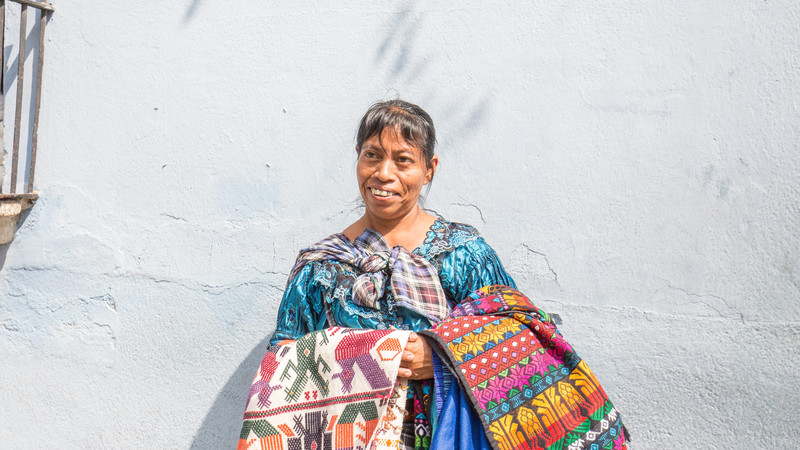
Today, textile weaving is still ever-present in towns like San Antonio Aguas Calientes, just outside Antigua. Guatemalans wear Huipiles (an incredible garment typically woven by local women) with a sacred meaning based on region.
3. Guatemalans invented the first-ever chocolate bar
All of us (well, the chocolate lovers among us) would agree with the Maya people who worship the cacao tree. They call chocolate “the food of the Gods.” And they believe that chocolate holds incredible nutritional benefits, like reducing blood pressure. Today, Guatemala is a mass producer and exporter of chocolate products.
But don’t worry – there’s still plenty of quality chocolate to enjoy while in the country. Many of the best places are in shops around Antigua. And when there, be sure to visit ChocoMuseo, a museum that’ll teach you about its history and nutritional values.
4. There are more than 30 volcanoes in Guatemala
The insane number of volcanoes in Guatemala is surely enough to put it on the map. Of these, the most noteworthy volcano is Tajumulco. It’s the highest peak in Central America at a whopping 4,202 metres. Out of over 30 volcanoes, only three are active: Fuego, Pacaya and Santiaguito.
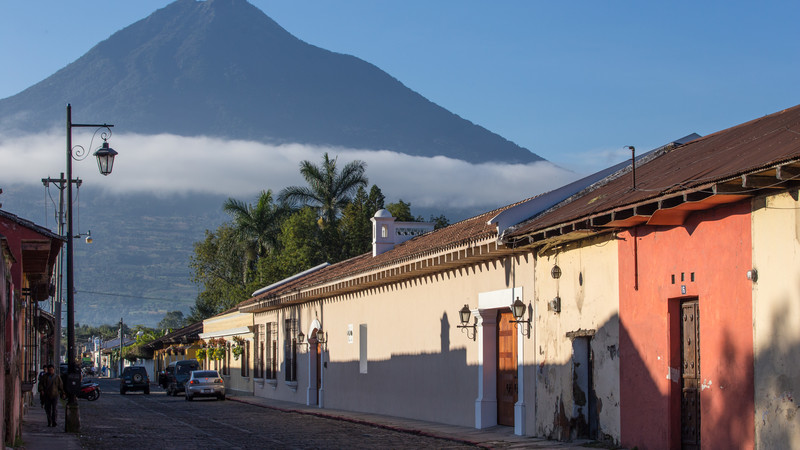
Oh, the beauty of Guatemala’s volcanoes. Extra fact: the bath by Quetzaltenango’s volcano is naturally heated by a volcanic vent.
“Once at the base of the volcano, you have the opportunity to roast some marshmallows in a pit to celebrate all that effort you put in for climbing this active volcano. If you are lucky, you can even roast them over molten rock.”
Dennis Asturias, one of Intrepid’s local leaders in Guatemala, shares a snippet of his experience on the hike
An experience you won’t want to miss is a hike up Pacaya volcano. Whether you trek by foot or take a horse ride up, the view from the top of Pacaya is simply spectacular.
5. Tikal National Park is the first mixed UNESCO World Heritage Site
Tikal National Park has earned its title as the first mixed UNESCO World Heritage Site for its cultural and natural wonders. Tikal’s Maya ruins are embedded in the jungle. From a distance, you can spot them pop out of the rich green canopy – it’s breathtaking.
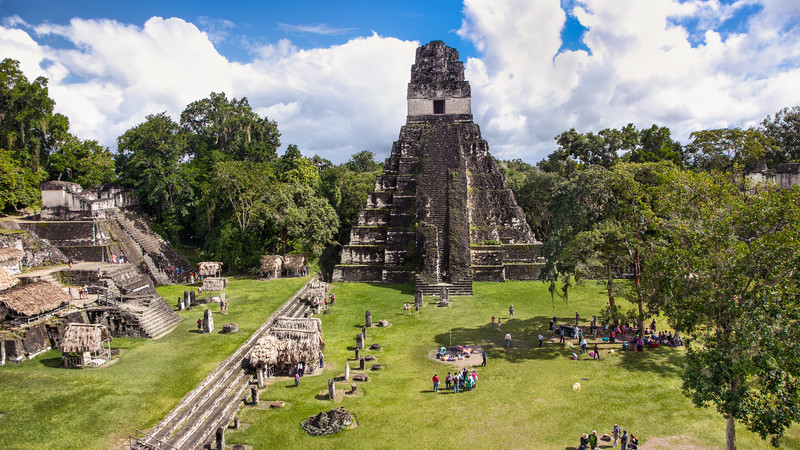
Climb to the top of the ruins to spot local residents (we’re talking toucans and macaws). Find out about the history behind the 5 granite temples by a fantastic local guide (we’ve got you covered on Intrepid’s 17-day small group adventure from Mexico to Belize).
6. Some Guatemalans worship a Saint named Maximón
Arguably, one of the most mysterious Guatemalan facts is the worshipping of Maximón. A shocking legend about him says that when the village men would head off to work, Maximón slept with all of their wives! Consequently, the men cut off Maximóns arms and legs in a fit of anger, which explains why most effigies of him are made without arms.
7. Coffee is Guatemala’s biggest export business
Coffee is big in Guatemala. Like, really big. By 1880, coffee accounted for 90% of Guatemala’s exports, and even today, it’s one of the country’s main exports and sources of income. The coffee has a distinct flavor to it, typically full-bodied and has rich chocolate and cocoa flavors.
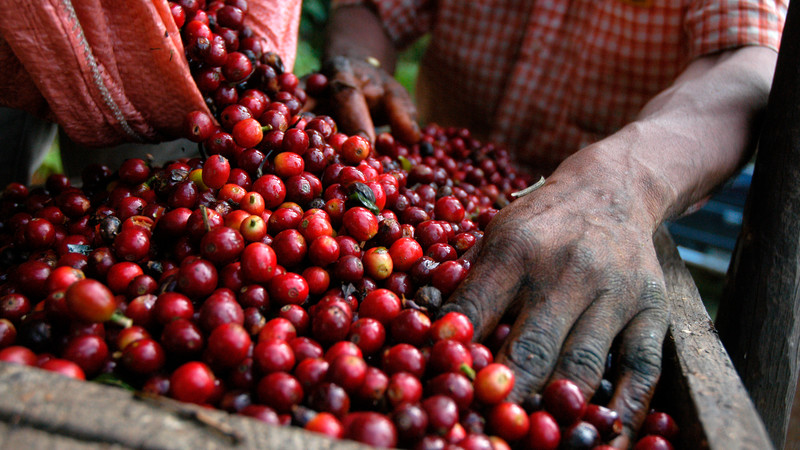
“If you are an avid coffee drinker like myself, I would recommend going to places that show you the whole process of acquiring coffee. About 2 km away from the main plaza in Antigua is a place called La Azotea. Take a tuk-tuk to this place for an authentic, yet practical experience. At La Azotea, you can visit the coffee museum as well the music museum. The coffee museum is set in an old mill and visitors are provided explanations of the history, processing, marketing and brewing of coffee.”
Coffee experience recommendation from Dennis, one of Intrepid’s local leaders in Guatemala
8. A hurricane unveiled a ‘Rhode Island-sized’ jade mine
Guatemala is among the biggest jade producers in the world. The Maya people used these rare stones for ideological rituals. On a visit, you can buy your own precious stones from the jewelry stores around Antigua.
9. Old American school buses live their second lives as ‘chicken buses’
When big yellow American school buses near 10 years or clock in 150,000 miles, some are auctioned off and driven down to Guatemala. The buses are revived by locals with strokes of paint in every color of the rainbow. Guatemalans then use it for local transport. Riding Guatemala’s public transit is a thrilling ride. Opting for this budget-friendly travel alternative will give you an eclectic local experience.
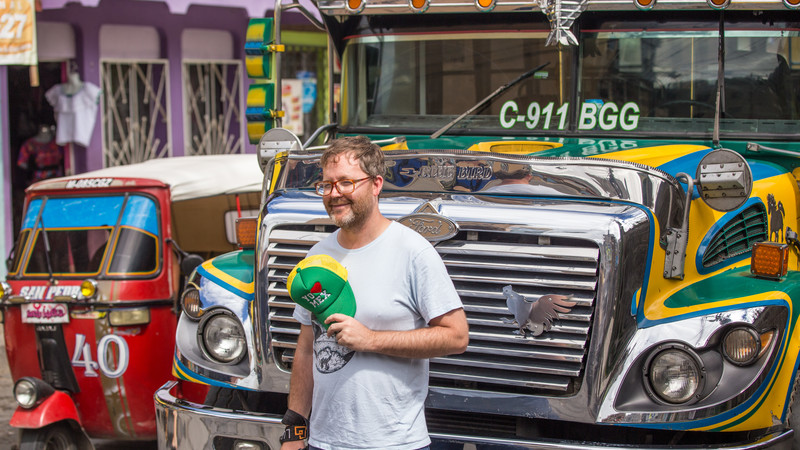
10. At Tortugario Montericco, you can help release turtles into the sea
Who doesn’t want to see and help these cute creatures take their steps in life? At Tortugario Montericco, you have the opportunity to help with conservation efforts. They’ve set up nested protection for the eggs along the beach (an area that’s an important nesting site for olive ridley turtles).
The nesting season runs from June to December and peaks in August and September. So if you are in Guatemala around this time, this is a fabulous opportunity for wildlife lovers to engage in releasing of the turtles.
Dennis, one of Intrepid’s local leaders in Guatemala, gives tips on when to go
11. Guatemala’s Lake Atitlan is the deepest lake in Central America
Just as deep as it is beautiful! Only 4 hours away from Antigua, it’s a fantastic spot for enthusiastic photographers to capture some of the best volcano views.
San Jorge La Laguna is a small village that overlooks Lake Atitlan and is home to locals eager to let you in on their traditional crafts. Better yet, stay with a local host family to really immerse yourself in the culture.
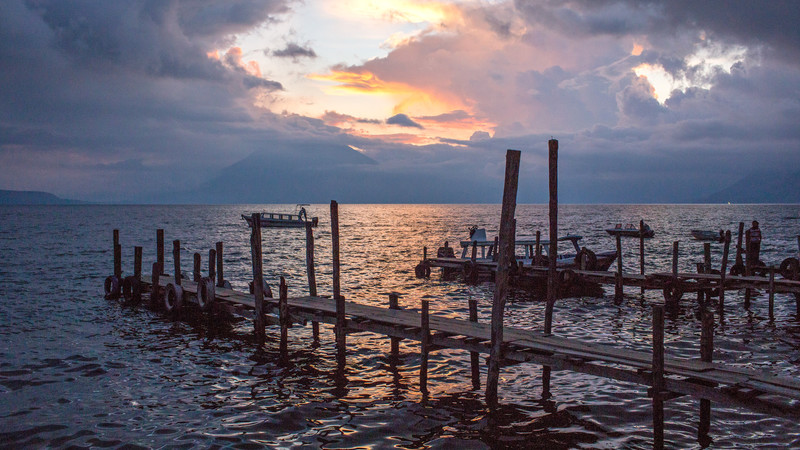
12. Guatemalans fly kites to honor their dead
All Saints Day Kite Festival is Guatemalans’ way of honoring their dead. Every year on November 1st, Guatemalans partake in this ritual that has been around for more than 3000 years. People flock to the cemeteries to clean and decorate the graves of their loved ones. Then, Guatemalans fly massive and intricately decorated kites high in the sky—it’s quite the sight to behold.
Why not learn more about Guatemala... in Guatemala?
—
A major thank you to Intrepid’s local Guatemala tour leader, Dennis Asturias, for his on-the-ground insights!

